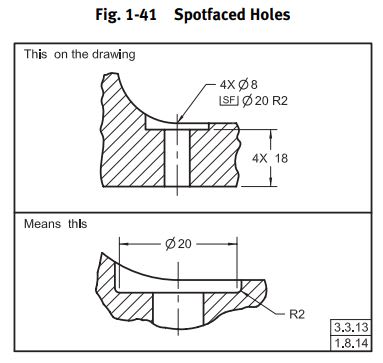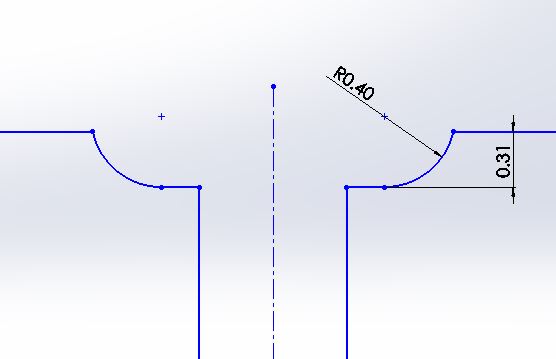Hi Burunduk,
How short can a cylindrical feature of size be? Can it have an axial length of 0.05mm? Maybe even shorter? Maybe it needs an axial length equal to its diameter?? What if a circle is printed in some zero thickness way onto a piece of mylar or onto a piece of glass? Is that 2D circle not a feature of size? The only orientation of that circle, or for that matter of any cylindrical hole cut through relatively thin material, will come from the planar surface it is printed on or cut through. That assumption is made every day when inspecting sheetmetal parts.
Can a 2D circular feature with no axial length constrain a circular mating envelope? If that circular mating envelope is lying on the same planar surface that the circular feature is printed onto, then I think the answer is yes.
If that circular feature is all I care to control why can't I put a directly toleranced diameter and a position tolerance on it? Clearly the viewing orientation to measure the circular feature is normal to the planar surface the circular feature is printed on. It might be nice if Y14.5 was written in a more general way that more clearly supports this, but what makes this an unacceptable extension of principles?
When we put a position tolerance on a hole punched in a sheetmetal part do we say that the position controls the location and orientation of the hole, or just the location? The only practical answer is that the position controls location only. For the measurement of that feature we will orient to the surface the hole is punch through, just as we must orient to the surface a 2D circular feature is printed on, or machined into.
If you specify a directly toleranced diameter of the planar surface a the bottom of the spotface, and include a position tolerance with a tolerance zone diameter of whatever you need, relative to any datum reference frame you deem appropriate where does that fail?
We should be trying to maximize profit, or at least ensure adequate quality at the lowest possible cost, rather than rigidly following a standard, so I would recommend this approach for a spotface if a location tolerance is needed. The wording in Y14.5 should support this, but no need to leave the location untoleranced just because the standard hasn't been written in that way yet. If discomfort or refusal is encountered then a short flag note to explain the already clear meaning should make things proper enough.
Dean


